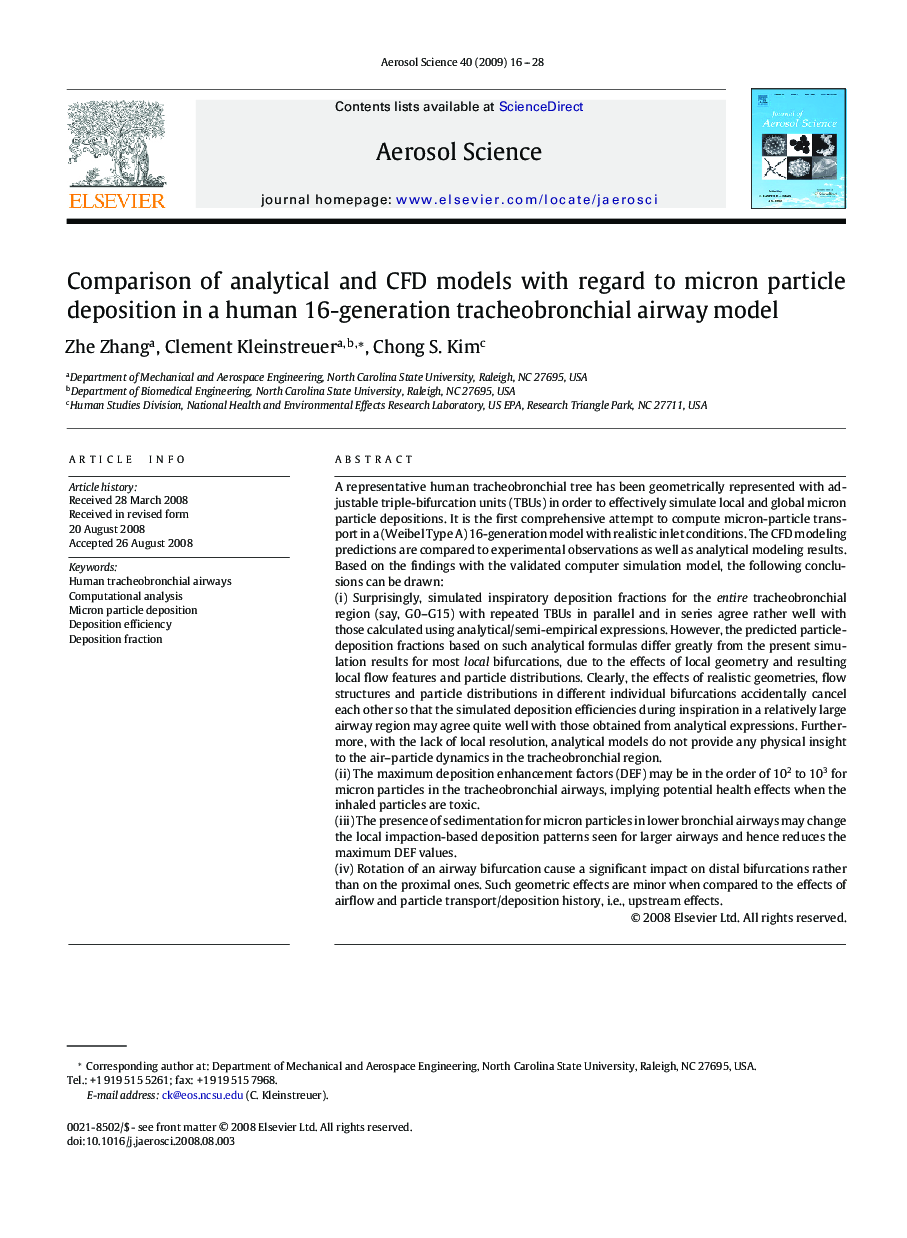| Article ID | Journal | Published Year | Pages | File Type |
|---|---|---|---|---|
| 4453011 | Journal of Aerosol Science | 2009 | 13 Pages |
A representative human tracheobronchial tree has been geometrically represented with adjustable triple-bifurcation units (TBUs) in order to effectively simulate local and global micron particle depositions. It is the first comprehensive attempt to compute micron-particle transport in a (Weibel Type A) 16-generation model with realistic inlet conditions. The CFD modeling predictions are compared to experimental observations as well as analytical modeling results. Based on the findings with the validated computer simulation model, the following conclusions can be drawn:(i) Surprisingly, simulated inspiratory deposition fractions for the entire tracheobronchial region (say, G0–G15) with repeated TBUs in parallel and in series agree rather well with those calculated using analytical/semi-empirical expressions. However, the predicted particle-deposition fractions based on such analytical formulas differ greatly from the present simulation results for most local bifurcations, due to the effects of local geometry and resulting local flow features and particle distributions. Clearly, the effects of realistic geometries, flow structures and particle distributions in different individual bifurcations accidentally cancel each other so that the simulated deposition efficiencies during inspiration in a relatively large airway region may agree quite well with those obtained from analytical expressions. Furthermore, with the lack of local resolution, analytical models do not provide any physical insight to the air–particle dynamics in the tracheobronchial region.(ii) The maximum deposition enhancement factors (DEF) may be in the order of 102 to 103 for micron particles in the tracheobronchial airways, implying potential health effects when the inhaled particles are toxic.(iii) The presence of sedimentation for micron particles in lower bronchial airways may change the local impaction-based deposition patterns seen for larger airways and hence reduces the maximum DEF values.(iv) Rotation of an airway bifurcation cause a significant impact on distal bifurcations rather than on the proximal ones. Such geometric effects are minor when compared to the effects of airflow and particle transport/deposition history, i.e., upstream effects.
